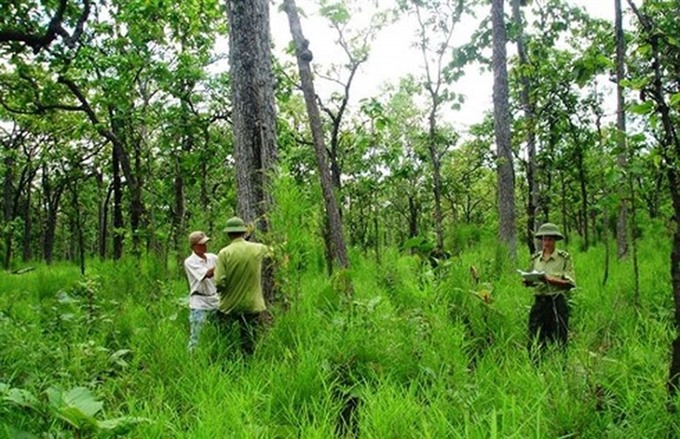 Society
Society

The management of land areas previously allocated to the State-run agriculture and forestry farms needs reviewing to avoid disputes and losses for the State, according to experts.
 |
| The management of land areas previously allocated to the State-run agriculture and forestry farms needs reviewing to avoid disputes and losses for the State. — Photo nguoitieudung.vn |
HÀ NỘI — The management of land areas previously allocated to the State-run agriculture and forestry farms needs reviewing to avoid disputes and losses for the State, according to experts.
The land is currently used by agriculture companies, forestry companies, forest management units and other organisations, households and individuals.
In fact, a number of shortcomings has been exposed in the management and use of the land, such as in the implementation of procedures for lease, determination of land prices and collection of land use levy, and granting certificates of land-use rights and changing the land use purposes.
According to a report by the Ministry of Natural Resources and Environment, more than 60 per cent of the State-owned agricultural and forest farms that had switched to company models did not follow procedures of land transfer with payment or land lease as per regulations in the Law of Land 2003.
These farms owned 88 per cent of total land allocated to the State agricultural and forest farms nation-wide, the report said.
Many farms had not closely monitored the land use after transfer to companies or individuals so many areas of land were illegally converted to civil uses such as housing or service facilities, or even sold for high profits.
A typical case is twenty-seven constructions that were illegally built on forest land in Hà Nội’s Sóc Sơn District over the past two years. The work include houses, villas and even an eco-tourism area with a swimming pool, stilt houses and concrete roads.
The main reason originated from a wrong perception that the farms were owned by the State and the managers were State-paid servants so land transfer did not need supervising and monitoring.
Many farms did not have funds for surveying and marking out land boundaries of the areas they are in charge while staff were either incompetent or lacked legal knowledge.
According to Nguyễn Văn Chiến, former deputy director of Land Registration Department (The Land Management Administration), in order to perform the management of State farms well in the future, managers should first change the policies which were not suitable with the reality.
“It was necessary to sufficiently provide funds from State and local budgets for surveying and marking out land boundaries of agricultural and forestry farms to serve as a basis for State management tasks on other types of land,” Chiến said.
Also, monitoring and inspection of law compliance to the land originating from agricultural and forestry farms should be enhanced to avoid incorrect land use, he said.
Over 30 years, transferring land of State-owned agriculture and forestry farms has made a significant contribution to socio-economic development in Tây Nguyên (Central Highlands) region.
The land management has been well performed in the province of Đắk Lắk for many years.
At present, the province has a total of 65 agriculture and forestry companies and forest management boards which were allocated more than 345,703 ha of land.
Vice Chairman of the provincial People’s Committee Y Giang Gry Niê Knơng said the province had made land measurement and drew cadastral maps for nearly 200,000ha of farmland.
The inspection works had discovered and handled violations by companies, organisations and households.
This year, the province had revoked 5,572ha from eight entities found violating land use regulations.
The close watch had helped reduce land disputes and complaints making contribution to security and social stability in the province.
Farm companies had focused on protecting and planting forests, and restructuring agricultural plant patterns suitable with local characteristics.
Along with the achievement of farm land management, the province has been facing a number of difficulties.
According to Bùi Thanh Lam, director of the province’s Natural Resources and Environment Department, since 2004 the province had allocated land to communes for management but in fact the land use has not been effective enough.
At present, hundred thousands of hectares of land were misused in several communes.
“Large areas of land transferred caused pressures for communes in management and forest protection”, said Lam.
“Under the regulations, the heads of communes were responsible for land management and forest protection. But in fact, communes did not have enough human resource for the job”, Lam said.
“So, the allocated land was illegally encroached by local people,” he said.
Granting certificates of land use rights also faced obstacles.
In the province, there were 11 villages set up by local ethnic minorities and migrants who were allocated land of State farms.
After 14 years of improving the forest soils for agriculture production, they had stable lives but were not granted the certificates of land use rights due to legal regulations, Lam said.
Therefore the province wanted revisions to legal regulations to help effectively manage and use the land of former State-owned agriculture and forestry farms, Lam added. — VNS




